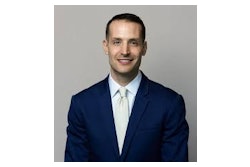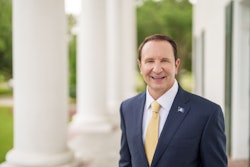 Carol Ashley, lead counsel of the team that wrote the American Association for Access, Equity, and Diversity’s amicus brief
Carol Ashley, lead counsel of the team that wrote the American Association for Access, Equity, and Diversity’s amicus brief
The two cases, Students for Fair Admissions (SFFA) vs. University of North Carolina (UNC) and SFFA vs. Harvard, were brought by a group led by a conservative activist on behalf of students who believe that they were unfairly denied admission to the undergraduate programs at those schools. UNC is accused of violating the Civil Rights Act of 1964 and the 14th Amendment by using race as too strong of a factor in admissions decisions and by ignoring race-neutral alternatives. Harvard is accused of discriminating against Asian-Americans by giving applicants lower personal ratings than those of students from other races, thereby maintaining a soft quota.
Justices from the six-person conservative majority expressed deep skepticism about race-based affirmative action. Justice Clarence Thomas asked multiple times for lawyers on both sides to define “diversity” and cast doubt on the educational benefits of diversity.
“It’s kind of a purist approach to admissions,” said Paulette Granbury Russell, president of the National Association of Diversity Officers in Higher Education (NADOHE). “I just think that even though the attorneys were arguing that the consideration of race-conscious approaches should be narrowly tailored, and the process by which you consider them has to meet the strictest standard of scrutiny by the court, there may be a majority that are not convinced of that.”
Also at issue was the question of how long affirmative action measures should last. In her majority opinion in Grutter v. Bollinger, the 2003 case that affirmed that race could be used as one of many factors in admissions, Justice Sandra Day O’Connor wrote of her expectation that, in 25 years, racial preferences would no longer be necessary. 19 years after her opinion, justice and lawyers debated how much force O’Connor’s prediction should have as a deadline, and when affirmative action programs should sunset.
“Why should we think there will even be an endpoint?” said Justice Amy Coney Barrett.
A recurring theme discussed by both sides was the question of whether it is possible to separate a person’s race from their identity as a whole. Lawyers for SFFA suggested that such distinctions were achievable, arguing at one point that it was possible to consider an applicant’s culture without considering their race.  Peter McDonough, vice president and general counsel, American Council on Education
Peter McDonough, vice president and general counsel, American Council on Education
“That’s slicing the baloney awfully thin,” responded Justice Elena Kagan. “The race is part of the culture, and the culture is part of the race.”
In her questioning, Justice Ketanji Brown Jackson suggested that eliminating race as a consideration for admissions could have unfair negative consequences for people whose personal stories relate more closely to their racial identities. She used the example of a Black applicant who had descended from slaves and written an essay about being able to apply to college while her ancestors could not, compared to the example of a white applicant who had written about potentially being the fifth generation of his family to enroll in a given school. It would be difficult, said Brown Jackson, for an admissions committee to consider the two essays with equal fullness if they were forced to discount the Black applicant’s race. This might, she suggested, pose an equal-protection problem.
Peter McDonough, vice president and general counsel of the American Council on Education, which filed an amicus brief in support of UNC and Harvard, believes that the focus on race as a component of identity augers well for his side.
“I thought the argument was a hopeful sign of the challenge of decreeing that blinders have to be put on admissions officers relating to race in a context in which their job is to look at what informs the nature of the applicant that they’re considering,” he said.
Carol Ashley, lead counsel of the team that wrote the American Association for Access, Equity, and Diversity’s amicus brief on the side of UNC and Harvard, saw evidence that the justices might not go for a verdict so strong as to wipe out race-based affirmative action altogether. She focused on questions put to Elizabeth Barchas Preloger, the U.S. Solicitor General about whether different policies should apply to military academies as suggesting that maybe some of the justices were considering varied circumstances.
“Maybe there are issues with specific things that UNC does, or Harvard does that the court may find don't meet strict scrutiny, but it should be a school-by-school, test-by-test basis to determine whether somebody meets the standard,” she said, of a potential kind of ruling.
McDonough also felt that the justices were looking closely at the nuances.
“I was struck by how long today's arguments were,” said McDonough. Arguments, which were calendared for two hours, stretched to five.
“I think that underscores the complication of the issue, but it also shows, I think, how seriously the justices are taking the issue," he said. "This is not a slam dunk outcome.”
Whatever the outcome, it will be a while before we know it. The Supreme Court is not expected to release a ruling until the end of their term in June. Until then, admissions offices around the country will be in the unfamiliar position of waiting for a decision.
Jon Edelman can be reached at [email protected]


















